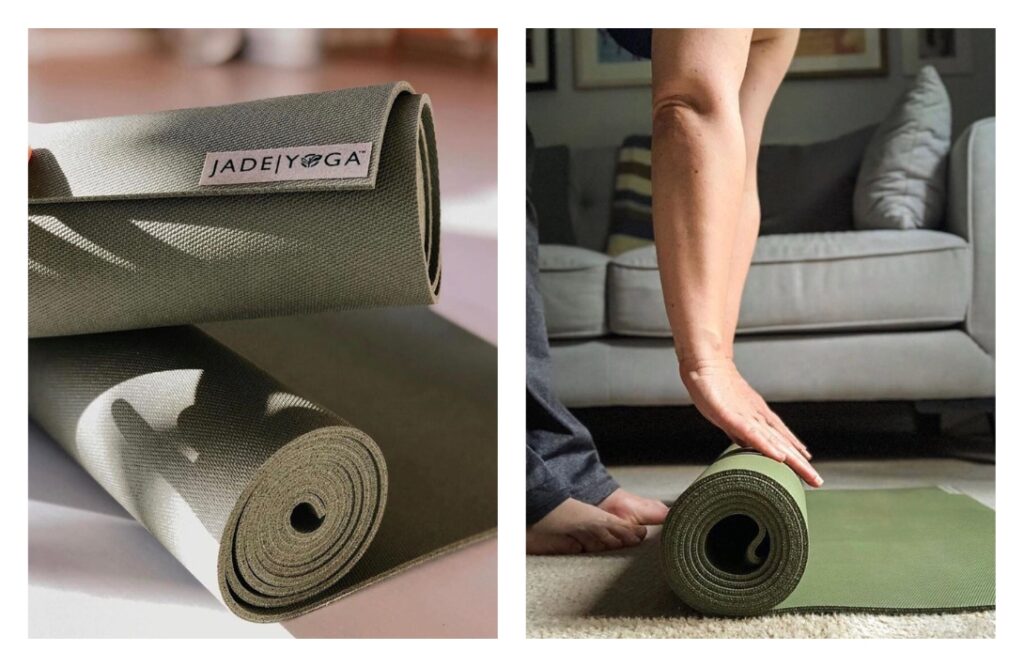In the quest for physical and mental well-being, humans have always sought connection with nature. For centuries, ancient yogis found solace and communion with the Earth by practicing their asanas on soft grassy surfaces. However, as yoga gained popularity worldwide, the need for more stable and hygienic practice spaces became apparent. Thus began the evolution of yoga mats – from humble beginnings in nature’s embrace to innovative creations that now prioritize sustainability and eco-friendliness. In this article, we will explore the fascinating evolution of yoga mats, delving into their humble beginnings on grassy surfaces to the cutting-edge technologies behind today’s eco-conscious designs. So roll up your medicine ball rack available on Aeromat. Join us on a journey through time as we explore how these mats have transformed from simple grass coverings to cutting-edge materials that align our bodies with both health and environmental consciousness.
The Origins of Yoga Mats
Centuries ago, as yoga practice began to gain popularity in ancient India, practitioners would often explore the depths of nature for a suitable surface to practice on. Grass served as the first makeshift yoga mat, providing a somewhat soft and natural base for yogis to perform their postures. However, there were limitations to this rudimentary tool; grass would often become slippery with sweat or dew, offering little stability during more intense poses.
As yoga continued to evolve and spread across different regions of the world, so too did the need for more reliable and accessible equipment. In the 1960s, an innovative yoga practitioner by the name of Angela Farmer introduced one of the earliest commercialized versions of the modern yoga mat—a thin rubber mat originally designed as a non-slip underlay for carpets.
Grass and Animal Skins: Early Yoga Mats
In the early days of yoga, practitioners did not have access to the comfortable and cushioned mats we have today. Instead, they relied on natural materials like grass and animal skins as their makeshift yoga mats. Grass mats provided a firm yet slightly uneven surface that challenged balance and stability during poses, increasing the strength and focus required. Animal skins, such as deer or cowhide, offered insulation from the cold ground while also providing a natural grip for hands and feet.
The use of these primitive mats not only demonstrated resourcefulness but also connected practitioners to nature. The grass beneath their feet reminded them of their connection to the earth and the importance of grounding oneself in the practice of yoga. The rough texture of animal skin allowed yogis to experience different sensations during poses like Downward Dog or Warrior I, heightening their awareness of body alignment.
The Rise of Rubber: A Gamechanger
The rise of rubber as a gamechanger in the world of yoga mats cannot be understated. With its unique combination of durability, non-slip grip, and eco-friendliness, rubber has revolutionized the way yogis practice their craft. Unlike traditional grass mats that were prone to wear and tear, rubber mats have proven to be incredibly resilient, making them a long-lasting investment for practitioners. The non-slip surface ensures stability during even the most challenging poses, allowing yogis to focus on their practice without worrying about slipping.
But perhaps the most remarkable aspect of rubber yoga mats is their eco-friendly nature. In an era where sustainability is paramount, these mats are made from natural materials such as tree sap and recycled rubber tires. This innovative approach not only eliminates waste but also reduces our carbon footprint by repurposing materials that would otherwise end up in landfills. Additionally, rubber yoga mats are biodegradable at the end of their useful life, ensuring they do not contribute to environmental pollution.
From PVC to Eco-Friendly Materials
In the world of yoga, the humble yoga mat plays a crucial role in our practice, providing us with comfort and stability. However, as our awareness of sustainability grows, it is becoming increasingly important to consider the environmental impact of our everyday products. Enter: eco-friendly yoga mats.
Traditionally, PVC (polyvinyl chloride) has been the go-to material for most yoga mats. While PVC mats may be affordable and durable, they come with a significant downside – their production and disposal processes are harmful to both human health and the environment. The toxic chemicals used in PVC manufacturing can leach into the soil and waterways, contributing to pollution and harming wildlife. Thankfully, eco-conscious yogis around the world have embraced alternative materials that minimize harm and maximize sustainability. Natural rubber is one such material that has gained popularity for its eco-friendly properties. Made from renewable resources like rubber trees, natural rubber mats offer excellent grip and comfort while reducing reliance on non-renewable resources like petroleum.
Conclusion: Embracing Sustainability in the Yoga World
In conclusion, embracing sustainability in the yoga world is not just a trendy buzzword; it is a necessary movement for the preservation of our planet and for our own well-being. By opting for eco-friendly yoga mats made from materials such as natural rubber, cork, or recycled materials, practitioners can make a significant impact on reducing their carbon footprint. Not only are these mats better for the environment, but they also offer numerous benefits to the user. Take a step towards a greener future by investing in an eco-friendly yoga mat and incorporating the peanut massage ball into your routine.
Sustainability goes beyond just choosing the right mat; it also involves being mindful of other aspects of our yoga practice. From using organic cotton clothing to supporting brands that prioritize fair trade and ethical manufacturing practices, every choice we make has an impact. Embracing sustainability in the yoga world means recognizing that our personal choices can contribute to a larger movement towards environmental responsibility and conscious living. It is through this collective effort that we can shape a more sustainable future for ourselves and generations to come. So let’s roll out our eco-friendly mats with pride and unite in this journey towards a greener yogic path.
ALSO READ / business how to choose the perfect flooring for your space
